Cannabis from the perspective of Indian Traditional Medicine, Ayurveda
‘’The Latin name ‘Cannabis indica’, suggests that cannabis grows, and is traditionally used in India.’’
Cannabis grows wild in the Himalayas, in India from Kashmir in the east to beyond Assam in the west, but also in Iran and all throughout Central and West Asia. (The Latin name ‘Cannabis indica’, later ‘Cannabis sativa’ already suggests that cannabis grows, and is traditionally used in India.) Cannabis is nowadays cultivated mostly in the tropical and subtropical parts of India.
In traditional Indian medical texts, cannabis has first been mentioned a couple of thousand years ago in the Atharva veda, whereas ayurvedic traditional texts do not mention this plant until the Middle Ages. The ayurvedic names of cannabis are “vijaya” - ‘the one who conquers’ and “siddhi” - ‘subtle power’, ‘achievement’. Ayurveda differentiates between three therapeutic parts of the plant. They have somewhat different actions on the body, and are given separate names. Bhang is a name for the leaves of male and female plants, and in certain regions of India the name is also used for flowers of the male plant. The name ganja is given to the flowering tops of the female plant, and charas is the name for the plant resin, which naturally exudes from leaves, stems and fruits of plants that grow in the mountains between 2000 and 3000 m of altitude. Nevertheless, some confusion exists regarding the names in India - in South and West India the difference in meaning between the names bhang and ganja has almost disappeared: the name ganja is used to denote the cannabis plant in general, including the leaves; and the name bhang is in some regions given to a drink made from ganja...
In Indian pharmacopeia, all parts of the plant are denoted as somewhat narcotic (the most powerful narcotic is in the plant’s resin, charas). But different parts of the plant can also stimulate digestion, act as analgesics, nervous system stimulants, can have sedative, spasmolytic, diuretic, and aphrodisiac actions. The plant is, according to ayurvedic basic energy (virya) differentiation, warming, and its long-term use dries up the body. With moderate use, it works first as a nervous system stimulant and powerful aphrodisiac, later its action is sedating. Habitual, prolonged use of Cannabis leads towards disbalance of all three basic physiological forces in the body (as Ayurveda recognizes them) - vata, pitta, and kapha - and as the result of this disbalance chronically poor digestion, melancholy, sexual impotence, and body wasting.
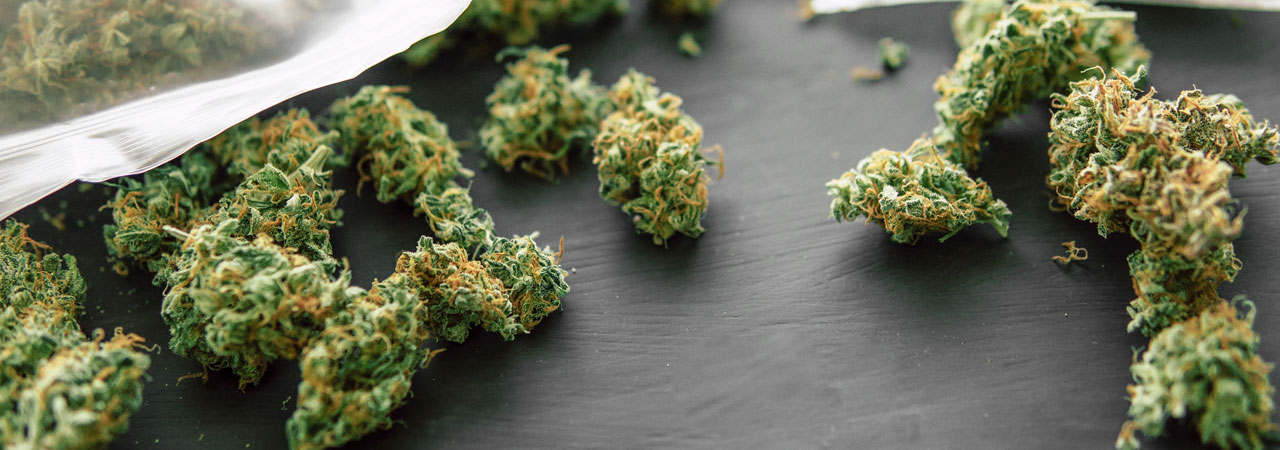
In Ayurveda, bhang is used to treat high blood pressure (this therapy is usually of limited duration, until high blood pressure is corrected with other ayurvedic measures), the juice is used for lowering intraocular pressure (glaucoma), and for short-term stimulation of the nervous system... Some martial artists in northern India, mainly wrestlers, take bhang with a paste made of almonds, pistachios, black pepper, saffron, rose petals etc., mixed with fresh cow’s milk - to ensure long term concentration during exhausting all-day practice, and to help the body (as their art demands the body to be as heavy as possible) to ingest enormous quantities of food, without losing its digestive power. Fresh leaf juice (bhang) is also used to treat dandruff, as a preventive measure against parasites in hair; also in cases of earache, and against bacterial inflammations and infestations of the ear. The juice is also diuretic, and therefore is used in treating inflammations of the bladder and kidney stones. Dried leaf powder is applied on fresh wounds to promote healing (new granulation tissue development). A poultice of crushed fresh leaves is used on the skin in cases of different skin infections, rashes, neuralgias - for example erysipelas, Herpes zoster, Chickenpox, eczema, etc. - to diminish pain and itching. Combined with other herbs, bhang can be used against diarrhoea - for this purpose, it is most usually combined with nutmeg (ganja may also be used for the same purpose - mainly with nutmeg and honey). With digestive herbs (like cumin, fennel, anise, ...) bhang can be excellent for stimulating appetite and digestion; with aphrodisiac herbs and foods (almonds, walnuts, sesame seeds, saffron...) it becomes an excellent aphrodisiac. When the leaves (bhang) on the other hand are mixed with tobacco, the plant diminishes appetite, and acts as an anti-aphrodisiac. In these cases, the actions of the cannabis plant are modified by other herbs in the mixture.
The most powerful narcotic, as mentioned above, is in the plant’s resin, charas, and it is used in Ayurveda in aroused psychiatric states, in manic states, sometimes also (short term use) for chronic insomnia, but also for chronic pain in terminal phases of tuberculosis and malignant tumours. It is also administered in cases of chronic debilitating dry cough, like in pertussis, and in patients with lung cancer - ayurvedic doctors prefer cannabis over opium in these cases, as cannabis (compared to opium) does not produce nausea, loss of appetite, constipation or headache.
What is the ayurvedic perspective on cannabis?
It is Spring 2014 and the Green Rush is in full swing. Colorado and Washington have legalized marijuana for recreational use, and 12 other states are strongly considering following in their footsteps.
Meanwhile, Uruguayan president Jose Mujica has been nominated for a Nobel Peace Prize having lead Uruguay to become “the first country in the world to legalize the production and sale” of marijuana.
The cannabis plant serves a thousand purposes and is a remarkably renewable resource (it literally grows like a weed). This global shift towards legalization is long overdue, and offers hope that we can yet reverse the absurd suppression and violent defamation this sacred plant has suffered in the last century.
In his book Shiva’s Broken Dream— detailing the world history of cannabis and the powerful movements to vilify it — Mel Thomas relates how,
The Vedas… describe how cannabis was created when the Gods stirred the heavenly oceans with the peak of Mount Mandara. A drop of amrita (heavenly nectar) fell from the sky and a sacred cannabis plant sprouted on the spot. Lord Siva brought the cannabis plant down from Mount Mandara for the pleasure of Mankind and for this the plant was consecrated to him [Siva].
Indeed, there are some intriguing theories that the cognitive and spiritual evolution of mankind was due in part to our interaction with sacred plants acting as vehicles for higher consciousness. For example, did you know mushroom spores can survive the vacuum of outer space?
The Ayurvedic tradition recognizes marijuana (known as vijaya in Sanskrit) as a medicinal herb. However, it is only ever recommended in miniscule doses, and always in combination with other more sattvic herbs to balance the tamasic effects of cannabis.
Alakananda Ma, a highly respected spiritual teacher and doctor of Ayurveda, acknowledges marijuana as “a muscle relaxant, euphoriant and analgesic” in her article on the topic. She explains,
Although long revered in India as a sacred plant of Shiva, ganja has, as we have seen, significant physical, emotional and spiritual impacts. In its ancient cultural setting, it has for centuries been used by world renouncing sadhus in conjunction with fasts and severe austerities.
In such a context, ganja could potentially be of value on the spiritual path, although this author has rarely met a ganja-smoking sadhu who had attained the ultimate goal. Taken out of its cultural context and introduced into a party lifestyle unheard-of in ancient tradition, ganja has become far more problematic.
This is a crucial point. Neo-hippies and new age spiritualists often invoke the use of ganja as an ancient and therefore legitimate tool on the road to enlightenment. What these invocations generally lack, however, is the proper ceremonial context and attendant sattvic lifestyle habits that accompanied the practice in the past. Ritualistic inhalation of a sacred herb on rare, auspicious occasions is very different than daily spliffs or perfunctory bong rips.
As it is, marijuana is a common form of self-medication. Different people smoke different strains for different reasons. In Ma’s article, she provides a breakdown of these types according to the doshas:
Vata smokes Marijuana calm down; pitta to “mellow out” and to feel less angry and driven; kapha to suppress deep-seated grief. Ma goes on to describe the phases that arise subsequent to ganja use, showing how it progresses through the gunas and acts as a “short-term euphoriant and long-term depressant”:
In the initial euphoria phase, the sattva guna is activated. Later, as giggles and ‘munchies’ set in, rajas predominates. Finally, the long-term effect is that of tamas, leading to a dull and foggy state of mind. Within this fog, the insights supposedly received under the mildly psychedelic impact of ganja cannot be integrated in any valuable way.
This description is consistent with this author’s experience. It’s a tricky business, because when the euphoric effect has worn off and you awaken from your nap, all you remember is the euphoria. The subtle effects are lost in the mix, and it appears to have been a bit of harmless, perhaps even enlightening fun.
Thus, habitual use becomes prajnaparadh, or a “crime against wisdom,” wherein we know something is harmful, but we do it anyway. Ayurveda then provides valuable perspective, offering reminders of the negative consequences of marijuana use. As Ma says,
[Marijuana is] a liver toxin. An important physical impact of Marijuana is sub-clinical hepatitis, a condition in which the liver is chronically congested, resulting in irritability, low-grade depression, slow wound healing, burning sensations, rashes, allergies and yellowish eyes. Dr. John Douillard agrees that:
Marijuana is a tamasic drug that can negatively affect memory. According to the NIH, it is addictive and mind-dulling, and can do permanent cognitive harm if used in excess… The tamasic effects of marijuana can dull the mind, leaving the aspirant dependent on marijuana use with only an illusion of real spiritual progress.
In this author’s opinion, the “illusion of real spiritual progress” is the most dangerous component of all. The negative health effects are relatively minor compared to the profound despair that accompanies spiritual confusion.
Regardless of the ecstasy one may experience while practicing yoga stoned, or toking up before meditation, the herb ultimately represents one more layer of veiling between the human mind and God-consciousness. Even worse, it gives the fleeting sensation of having attained some measure of sattva, only to leave the mind and body wallowing in tamas.
The goal of spiritual practice is to become firmly established in unity consciousness. Temporary glimpses of such bliss may serve as motivation on the path, but should never be mistaken as attainment of the goal. Unfortunately, many of the cosmic experiences available through marijuana bring the user one step forward then two steps back.
Psychedelica
Cannabis: The Original Medicine
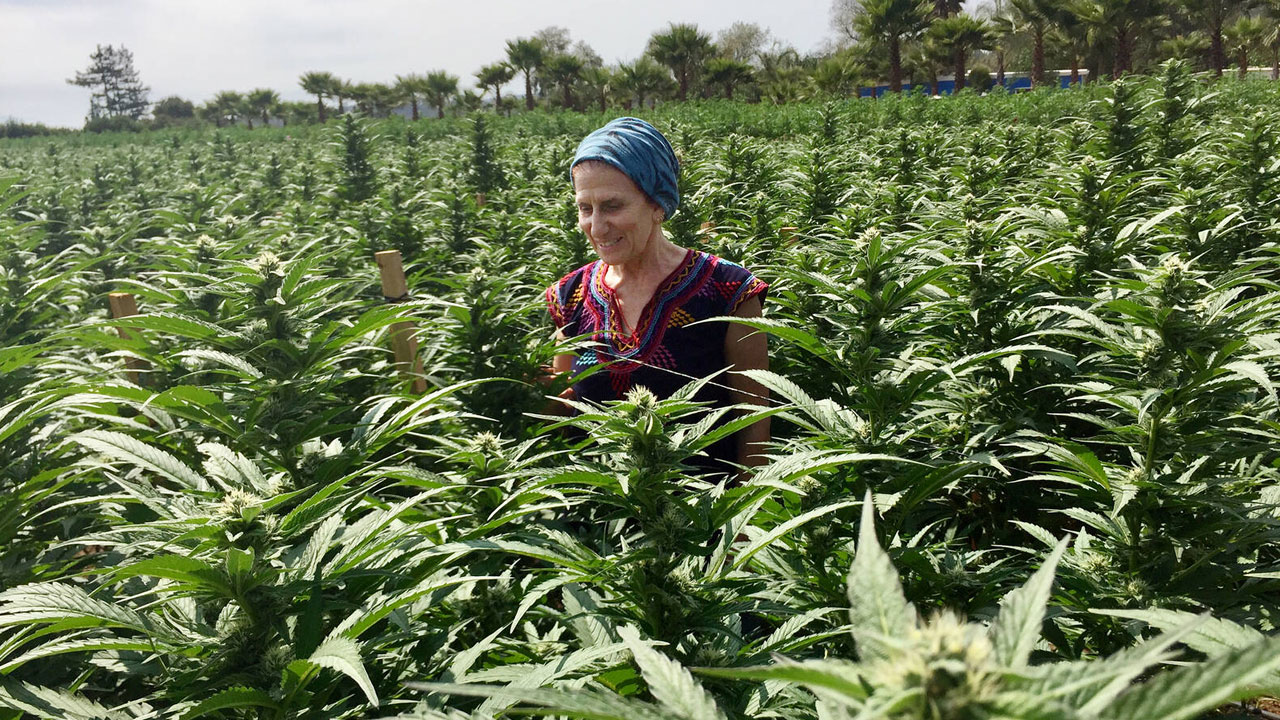
Similarly, marijuana’s well-known propensity for pain reduction can also serve as a detriment to emotional growth and spiritual development. In this article, Dr. John Douillard explains that,It is said in Ayurveda that the pain is directly across from the bliss, and the reason for the pain is to get our attention so that we can go through the pain and experience a deeper, more real aspect of the self and let a more loving and powerful version of ourselves out.
According to this perspective, experiencing the pain is essential for emotional and spiritual growth. Once you take away the pain you have taken away the road map to mental and emotional maturity. Additionally, according to Alcoholics Anonymous, emotional maturation stops at the age ones starts drinking or doing drugs.Habitual marijuana use can definitely cause arrested development. In the course of my youth, I remember a seemingly miraculous burst of personal maturation that just happened to coincide with an extended break from smoking.
Though it is not physically addictive, marijuana is powerfully habit-forming, and can thus be very difficult to put down. Thankfully, Ma has some recommendations for how to ease off. An herbal smoking mix, using herbs [such] as Red Clover, Osha, and Mullein can be used in place of or together with ganja as part of a plan to reduce ganja use. Adding Brahmi or Jatamansi to this mix will limit the tamasic impact of ganja.
In summary, the global movement to legalize cannabis is an enormously positive shift towards social and ecological justice. We have waged war against Mother Nature for far too long, and now is the time is for reconciliation. That being said, marijuana is a powerful plant that, like many medicines, has the potential to both heal and poison. Let us all use our best discrimination as we engage with this sacred green entity.If ever in doubt, please seek the expert guidance of an Ayurvedic practitioner. Or, if your local dispensary is not yet wise enough to employ a full-time holistic herbalist, trust the knowing that arises from within your own intuitive heart. So long as you aren’t stoned, you’ll not be led astray.
Marijuana and Ayurveda
Marijuana (Cannabis sativa, C. indica, or C. ruderalis) is known as bhaṅgā in Sanskrit. It has a long history of use in Ayurveda. Marijuana is classified as a toxic substance by the ancient texts on Ayurvedic herbs, but it has been used in healing preparations after purification. It is mentioned in many of the ancient texts on Ayurveda like the Charaka Samhita, Sushruta Samhita, and Shargandhara Samhita. Marijuana is described as a toxic substance by Sushruta and the description of the toxicity of marijuana is elaborated upon by many of the Rasa Shastras (the texts on medicinal preparations made from Metals, Minerals and Toxic plants). The Ananda Kanda has a whole chapter dedicated to the herb, its toxicity, the procedure for purification, cultivation, preparation, and use. In this chapter, the Ananda Kanda describes 9 successive stages of marijuana toxicity. This text also prescribes various antidotal therapies to counter the toxic and narcotic effects of excessive use of marijuana. We must understand that in most formulas traditionally calling for marijuana in Ayurveda, that the marijuana is now usually omitted due to issues with legality. The use of marijuana in mainstream Ayurvedic practice today is virtually non-existent.
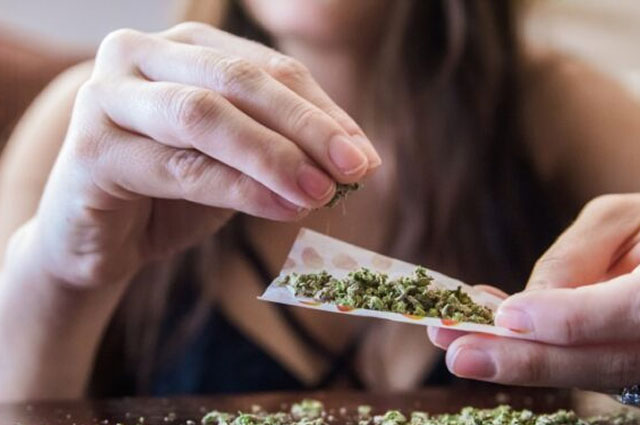

Toxic Effects and Antidotes
Ayurveda generally views marijuana as toxic to the liver and blood. Its inappropriate use can lead to all sorts of health problems. Its use in particular is prone to damage the liver, reproductive system; it can cause impotence or infertility, constipation, dryness of the skin and organs; it can deplete the immunity, strength, energy, motivation, happiness, and it weakens the sexual drive and the body’s ability to heal. It can cause serious damage to the skin and connective tissue, and deplete the organs to the extent that they have difficulty to function. When not used properly, marijuana tends to aggravate all three doshas (vata, pitta, and kapha). Marijuana is said to have tamasic (dulling) and rajasic (agitating) effects upon the mind. Its long-term use diminishes a person’s will and ambition and leads to dullness, confusion, lethargy, and depression.
It is said to clog the mind and the subtle channels and be complete contrary to meditation and spiritual practice (which aims to develop a sattvic or clear and balanced state of mind). Not to mention all the potential health concerns like lung and throat cancer that arise when marijuana is smoked. Because marijuana is extremely heating and depleting, the remedies for over-indulgence are usually cooling and nourishing. They mainly involve bed rest, purgation, and the external and internal use of cooling foods like milk, ghee, and sugar and cooling stimulating herbs like camphor, cloves, and sandalwood. Sour substances like lemon juice and tamarind are also prescribed for countering the narcotic effects of marijuana. The herb calamus (Acorus calamus) has special properties to help neutralize the toxins of marijuana and to remove the toxic accumulation of drugs from the body in general. This herb works on the nervous system and mind and helps address the emotional issues leading to drug use also. If a person uses marijuana (or has used marijuana), it is a good idea to take a little calamus root to help detoxify the body. For those who smoke marijuana, small amounts of calamus may be smoked with it or a small amount of the power 1/8th tsp or so can be taken a few times a day with milk. Long-term use of marijuana damages the mind and nervous system and depletes the tissues. Nervine herbs like calamus, brahmi, amla, haritki, and sandalwood have specific properties to help the body remove the toxins accumulated from marijuana use and to repair the damaged nervous system. For treatment of depletion due to long term marijuana use, these herbs are best taken with nourishing tonic herbs like ashvagandha, shatavari, bala, and herbs of the ashta varga. Or the herbal confection Chyavan Prash (which contains most of these nervine and tonic herbs) can be taken with milk to cleanse and strengthen the body.
Visha (Toxic Plants Medicines in Ayurveda)
When used in Ayurveda, marijuana is never used in its pure state, but only after purification because it is considered a toxic substance. The Rasa Shastras list marijuana in the sections on visha (poisonous plants used for healing) along with other toxic plants. Extremely deadly plants like visha and ativisha (monkshood), visha-tinduka (poison seed), and gunja (red rosary pea) are categorized in Ayurveda as visha (or poison). Consumption of these plants will usually cause death. Plants with slightly less toxic effects are called upavisha; these include jaya pala (croton seed) bhallataka (marking nut), karavira (oleander), dhastura (dhatura), and ahiphena (opium). Marijuana is also listed in the Ayurvedic texts among the upavishas, or semi-toxic medicinal plants. Ingestion of these plants typically will not lead to instantaneous death, but they will damage the body and lead to toxic accumulation which can eventually be fatal. The shastras prescribe methods for shodhana (purification) of all these plants which render them non-toxic and safe for medical use. Marijuana and other toxic plants are only considered fit for use in healing after purification / detoxification. Extremely toxic metals and minerals like lead, copper, arsenic, and even mercury are also purified (and rendered safe and non-toxic) for internal consumption in Ayurveda according to similar procedures given in these same texts. These toxic metals, minerals, and plants are treated with great respect and care in Ayurveda for their great power to hurt or heal. All of these medicines are only ever taken in small doses, and for short amounts of time, when they are absolutely needed. Due to their extreme potency, their healing effects can be quite pronounced, and such medicines are very useful in conditions which are otherwise difficult to cure or incurable.
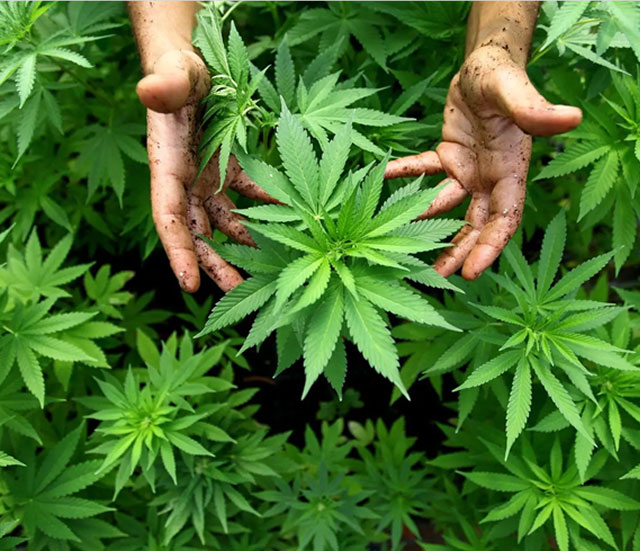

Detoxification of Marijuana for use in Medicines
The ancient texts give details for several procedures for the purification or detoxification of marijuana. These texts also list the adverse effects of the use of unpurified marijuana. For medicine, marijuana is almost always consumed orally and not smoked. The parts of the plant which are most commonly used in healing preparations are the leaves and fruits (called bhaṅgā). The unpolinated flowers (called gāṅjā), the resin, the seeds, and the roots are also used in some preparations (though the roots are considered especially toxic). Whatever part is used, Ayurveda always recommends some method of purification for this herb. One procedure involves boiling marijuana in the decoction of Babbula (Acacia arabica). Other methods involve mixing it with milk in various ways. The simplest procedure for the purification of marijuana involves soaking the herb in pure water for 24 hours. After this the herbs is squeezed to extract remaining liquid and then dried. After this, it is fried in cow’s ghee over medium heat before storing for use in medicines. This process helps to reduce the narcotic effects of marijuana and removes its toxic qualities. In Ayurveda, only marijuana processed in this way is considered safe to use for healing. Marijuana which has undergone the process of shodhana (purification) is called shudha bhanga (pure marijuana). Whenever marijuana is called for in Ayurvedic formulas, it is assumed that purified marijuana be used.
Dosage and Method of Administration
Even in its purified state, marijuana is recognized as a very powerful substance which is only ever used in very small quantities. The recommended dosage for marijuana is up to 250 - 500 mg (about 1/8th - 1/4th tsp of powdered herb) 1 - 3 times per day. Marijuana is never used alone in Ayurveda, but as a component of formulas. Herbs are safer and more effective as a part of formulas in general, but this concept becomes even more important in the case of toxic herbs like marijuana. When taken in herbal formulas along with other herbs the residual toxic effects of marijuana are balanced by the other herbs. These formulas also are not taken alone, but along with with anupanas (substances to direct and enhance the properties of the herbs) like milk, sugar, or ghee. The use of cooling and nourishing anupanas with marijuana helps to counter its drying and weakening properties. There are several dozen important Ayurvedic formulas listed in the tradition texts incorporating marijuana, including Jatiphaladi Churna, Kumari Asav, and Madan Modaka.
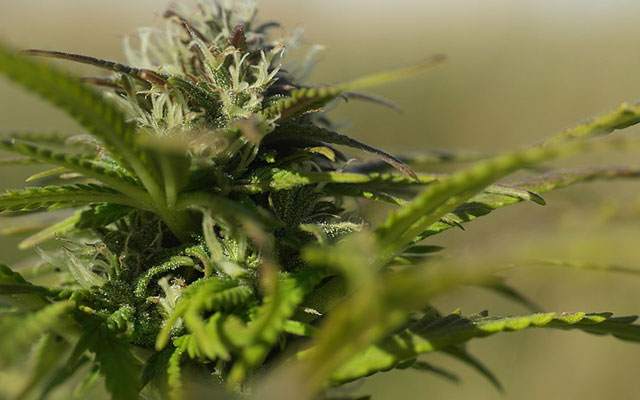
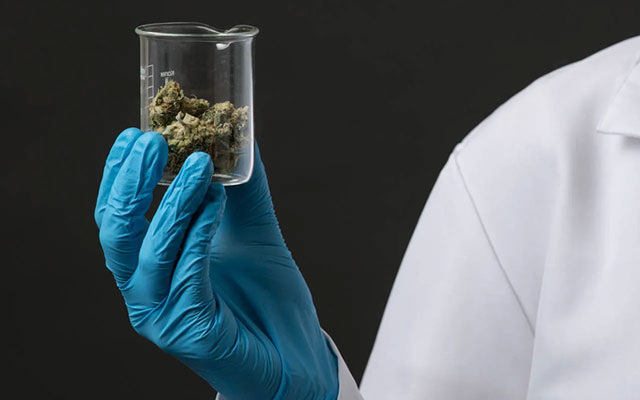
Healing Properties of Marijuana According to Ayurveda
Marijauana is classified as hot and bitter, pungent, and astringent in taste. It is light, drying, penetrating, and has dulling and narcotic qualities. When used properly, it decreases kapha, increases pitta, increases digestion, and causes constipation. It has the potential to damage or heal the reproductive tissue depending on how it is used. In Ayurveda, marijuana has been used mainly to treat conditions of the digestive tract and respiratory tract. Its has been used specifically to treat sprue syndrom, irritable bowel syndrome, Crone’s dis-ease, chronic malabsorption, loss of appetite, diarrhea, nasal catarrh, fever, and also used as a general tonic. Though many authors speculate that marijuana may have been used as a pain-killer due to its intoxicating qualities, there is little evidence in the Ayurvedic texts for this use of the herb. In the traditional texts on Ayurveda, intoxication is generally listed among the adverse effects of the improper use of the herb, rather than as a desirable healing property. Ayurvedic therapies generally aim to promote mental clarity and usually herbs and practices which dull the mind and senses are strictly avoided. In some cases Ayurveda has used marijuana to treat specific mental illnesses, epilepsy, and nervous system disorder.
An Ayurvedic Perspective on the Modern Western Uses of Marijuana for Healing
In the West, marijuana is gaining popularity as a medicinal substance for helping to treat cancer, the side-effects of chemo-therapy, glaucoma, epilepsy, HIV, diabetes, MS, nausea and vomiting, and to treat pain in general. Aurveda would tend to treat most of these conditions using herbs with different qualities and properties than marijuana and for most of these conditions Ayurveda would not recommend marijauana as a remedy. Of this list of conditions which marijuana is routinely given for in the West, the only ones that Ayurveda would traditionally recommend marijauana for are nausea and vomiting, and possibly cancer, HIV, epilepsy and MS. Ayurveda has better herbs and formulas for treating all of these conditions. It is important to note that used in the wrong ways, marijuana could also cause each of these conditions. If marijuana is purified and used in very small amounts as a part of well-designed herbal formulations, it may be capable of helping to treat these conditions. If marijuana is taken in its pure and toxic state, if it is taken alone, or in large quantities, it will have great power to damage the nervous system, deplete the tissues and immunity and cause these conditions. When marijuana is smoked, its toxic effects are particularly pronounced, and many of its its medicinal effects are lessened. Ayurveda traditionally does not recommend smoking marijuana for this reason. In particular Ayurveda would not consider marijuana a useful substance for treating glaucoma (its effects on the condition are very brief and it does not address the root cause). Ayurveda also would not tend to recommend marijuana for treating pain (including that arising from chemo-therapy). As said before Ayurveda teaches that healing comes when the mind is clear. Ayurveda views feeling pain and difficult emotions as an integral part of processing the factors which have cause dis-ease and generally frowns upon any treatments that dull the mind or numb the senses. In general, Ayurveda would not condone the ways “medicinal” marijuana is being used in the West, but instead warn of the great dangers of using this plant in this way.
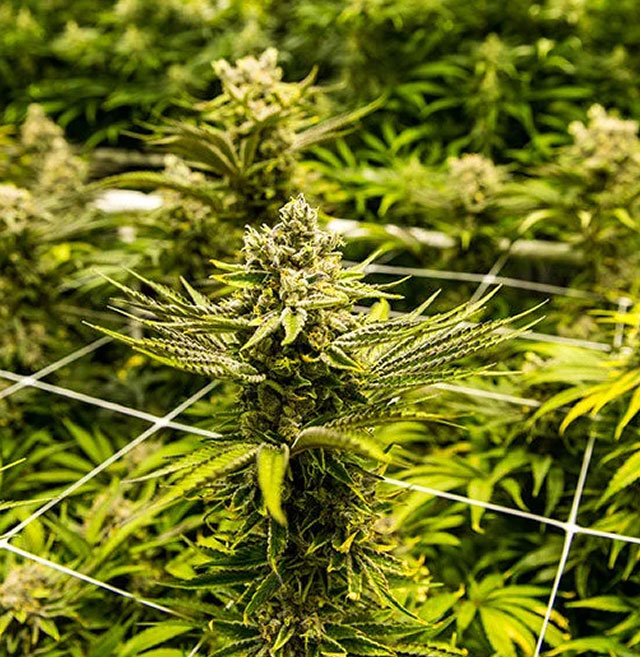
Marijuana in Hindu Spirituality
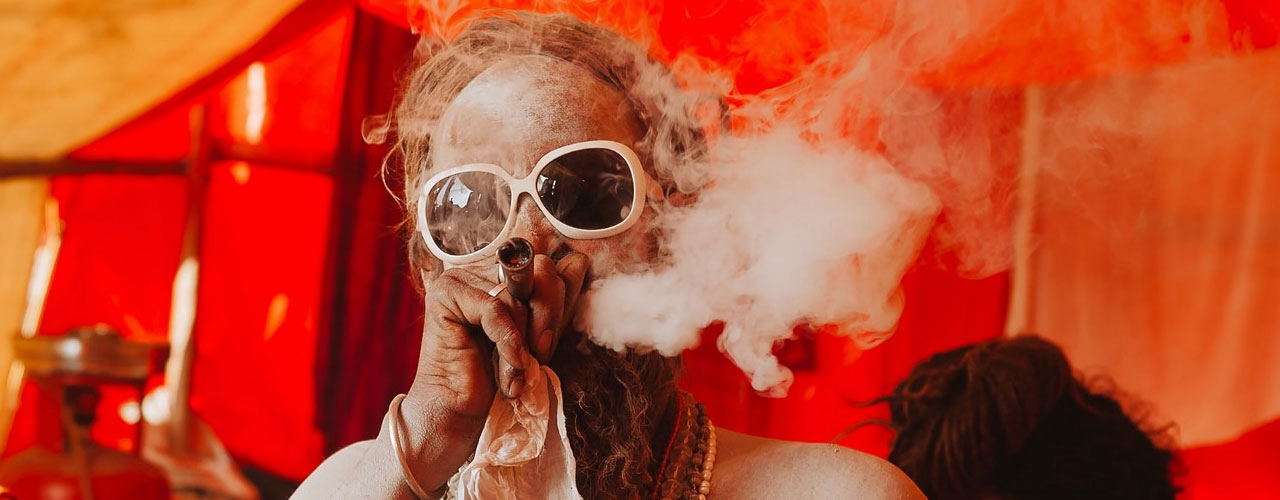
Marijuana is considered a sacred plant by many Hindus but there is great misunderstanding about this. The sanctity of marijuana can be traced to the Atharva Veda where marijuana is described as one of 5 very sacred plants along with barley, darbha grass, sugar, and Soma. Later scriptures state that marijuana is sacred to Lord Rudra / Shiva and they detail the growth, preparation, and consumption of the plant for spiritual purposes. The spiritual use of marijuana, like the medical use of marijuana, requires elaborate preparation to help neutralize toxins. In addition to physical means of purification, various mantras and complex spiritual practices are employed for the spiritual purification of the plant before use. The scriptures have not encouraged recreational use, intoxication from, or abuse of the substance. The scriptures warn against the over-use of alcohol and other intoxicants and they teach against using any substances for intoxication. Many people (especially in North India and Nepal) now use marijuana as an intoxicant either as a part of religious rituals on special occasions or as a regular recreational activity. They use marijuana as an intoxicant and do not heed the warnings of the scriptures about intoxicants. They use the mention of this plant in the scriptures in an attempt to justify their habitual abuse of the substance. Many sadhus (ascetics) in these regions smoke large amounts of marijuana on a daily basis. Many will admit that they are addicted to the substance and also that consumption of the substance makes it very difficult for them to carry out the tasks that other people do like working or fulfilling obligations. These people are not realized souls but drug addicts and their abuse of drugs does not lead them closer to God but further from Him. The realized Gurus warn against the dangers of intoxicants just as the scriptures do. Most Gurus absolutely prohibit the use of narcotics for their students. Brahmins in India (the spiritual caste) traditionally abstain from alcohol, marijuana and other intoxicants, in addition to meat and other tamasic substances. Apart from rare exceptions for a small group of Brahmins in Nepal and far North India on the festival night of Shivaratri, the serious spiritual seekers in India abstain from marijuana and other intoxicants as a matter of tradition and from cultural wisdom imparted by the Saints and Sages.
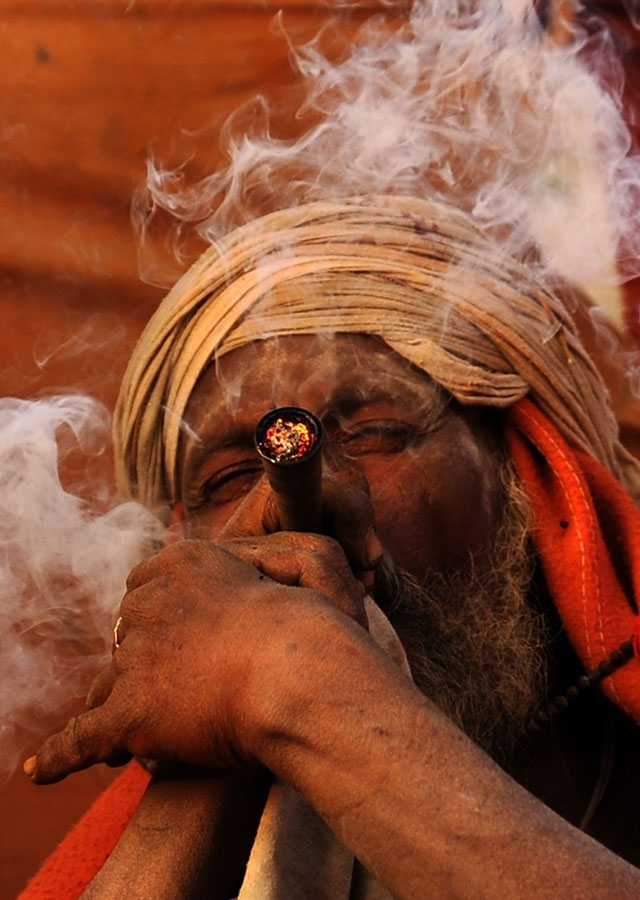
Marijuana’s Connection to Lord Shiva
Marijuana is considered sacred to Lord Rudra the destroyer because it is toxic and has destructive effects upon human physiology. Several other very toxic substances are also considered very sacred to Lord Shiva / Rudra including dhatura, oleander, and liquid mercury. These substances are also offered in prayers for Lord Shiva but people do not take this to mean that they should consume these items in their unpurified form. The consumption of oleander or mercury in particular is potentially fatal. Thieves, storms, weapons, armies, and dangerous animals are also said to relate to Lord Shiva for the same reason; that they can threaten life. The fact that marijuana is sacred to Shiva does not mean that it is good for people to consume. Yet all of these toxic plant substances are taken internally after purification for medical and spiritual purposes. This practice is symbolic of the grace of the Lord which is powerful to turn even poison into healing nectar. There are stories in the scriptures of Lord Shiva consuming a great poison called Hala hala which threatened the welfare of all living beings. When Lord Shiva consumed the Hala hala poison it did not go to his stomach but instead got held at His throat which turned dark blue. In this way Lord Shiva transmuted the poison and freed the world from its adverse effects. For this reason Lord Shiva is also referred to as Nilakantha, or He who has a blue (nila) throat (kantha). This story illustrates Lord Shiva’s connection to poisons, toxins, danger, trouble, destruction, and things that hurt life, and it illustrates how the Lord’s grace helps to make these things into means for spiritual transformation. Procedures which involve the purification of toxic substances for use in spiritual practice are popular among the devotees of Lord Shiva. There are few substances on Earth more toxic than mercury and mercury is considered especially sacred to Shiva. The Rasa Shastras say that mercury is the living embodiment of Shiva in the world. Mercury is said by Ayurveda to have the power to cause or cure all sorts of dis-eases depending upon how it is used. For use in medicine, the processing of mercury requires eight subsequent alchemical procedures. For use in spiritual practice, mercury is further processed in eleven additional ways. This is a mystical / spiritual science which requires great discipline and spiritual purity and for which there are few living masters teaching the science. Mercury processed in these ways has the power to turn base metal into Gold (or a substance chemically very similar to gold), and it has the power to lead the spiritual seeker to quick liberation. For this great purity and intense preparation is needed. The transmutation of base metal into gold is symbolic of the turning of the jiva (the embodied soul) into Shiva (the Divine). Obviously this is a complex and deeply mystical science for which mistakes in the process can be fatal. The use of marijuana for spiritual practice and the transmutation of its toxic qualities likewise is a spiritual science which requires the instruction of a master, great discipline, dedication, and spiritual purity. The mistakes along this path may not be immediately fatal but can be equally devastating in time. These powerful but dangerous spiritual sciences are best learned under the direct guidance of a fully realized master or left alone.
The Spiritual Effects of Marijuana
The bliss of spiritual realization is great and it has been likened to intoxication. Life is full of suffering for most people because they are bound by ego and delusion. They see themselves as separate from the divine and they falsely associate with the mind and body. Intoxication for them provides a release from suffering because it dulls consciousness. For people who are suffering numbness is a release which can seem blissful. Spiritual practice also provides a release, great peace, and bliss. For this reason Hinduism and many other religious traditions have likened spiritual realization to intoxication. This is why Christians offer and consume wine as a religious sacrament. But for a person who has transcended the tendencies of the instinctive mind and risen to a higher spiritual consciousness, life is joyful and blissful. In this case intoxication is not viewed as desirable because when a person feels good numbness will remove him from the good feelings. We must understand that there is no quick or easy path to spiritual realization. True lasting realization comes through serious self-inquiry and disciplined practice over time. Suffering comes from a person’s own doing and release from suffering also must come from a person’s own effort. No drug or any other external thing can lift a person from his own suffering. Spiritual practice brings clarity and knowledge of oneself. The self is Divine, but to see this a person must be very pure and very clear-minded. While spiritual practices calm the mind and lead to clarity and independence, drugs agitate the mind and lead to confusion and create external dependence.

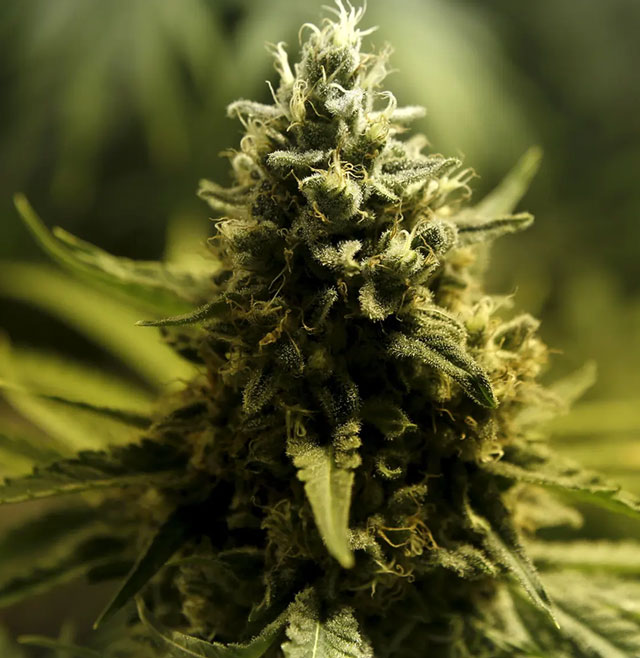
Marijuana and Alcohol in Ayurveda
Many people think wrongly that marijuana is safer to use than alcohol. People say that alcohol is processed by man and marijuana is naturally occurring. People claim that marijuana must be safe and non-toxic because it is a natural substance. Many naturally occurring substances like arsenic and hemlock are extremely deadly poisons. People also claim that the effects of alcohol are more harmful. Anyone who has seen a violent drunken brawl could understand where these misconceptions arise from. It is true that the immediate effects of over indulgence in alcohol are more pronounced and apparent. Yet when used in moderation, alcohol is considered safe to consume as a food. Ayurveda actually recommends the consumption of a small amount of alcohol as a regular food, after adding boiling water to remove its alcohol content and intoxicating properties. Its sour qualities are particularly suitable to balance vata dosha. Ayurveda has many traditional recipes for herbal alcohols in which the alcohol helps to increase the digestibility of the herbs and also helps carry the herbs to the nervous system and subtler tissues. Ayurveda teaches against drunkenness or intoxication in any form, but does recommend small amounts of alcohol as a nourishing food substance. Marijuana on the other hand is listed among the most potent and dangerous herbs and its use is limited to extreme health conditions only after due purification has been performed to reduce toxicity. Even when a person drinks too much and gets drunk the after effects last a relatively short time. For one day after drinking a person may experience a “hang-over” with pain, drowsiness, sweating, headache, and nausea. The after effects of marijuana, though less pronounced, last for many days or weeks after consuming even a small amount. The appetite is effected and the mental state is altered dramatically. Depression results and people’s motivation to do productive activities declines. A scientific study published recently in in the Journal of Neuroscience has found that casual use of marijuana noticeably alters the regions of the brain which relate to emotion and motivation. This damage can be long-lasting and is not present in the use of alcohol. www.jneurosci.org/.../5529.full.pdf+html
Genetic Modifying and Contamination of Marijuana
Many naturalists and health food enthusiasts who use organic foods and household products, and who avoid chemicals, preservatives, and genetically modified substances, indulge in marijuana. Such people view marijuana as a safe substance because it is a natural plant substance. Most people do not realize that many of the marijuana strains available in the US today have been genetically modified by powerful drug cartels to contain higher levels of THC. Because it has not been engineered by the big food companies people tend to assume that marijuana is safe from genetic modification, but this is not the case. The marijuana available today also is often laced with other narcotic substances which are toxic chemicals added to enhance its narcotic effects. Even where marijuana has been legalized and is bought in legal marijuana stores the potential for adulteration is present. These chances are much greater in states where marijuana must be acquired through illegal sources. In the case of illegal marijuana the situation is much worse. One of the principle concepts of organic production is that organic products must be made with respect for the Earth and the people who produce, process, and distribute the product. Milk which is organic must come from cows who are treated humanely and it must be processed, packed, and shipped by workers who are treated well and compensated fairly for their work. Many people have high standards about this when it comes to food and the household products that they buy. People who routinely boycott large multinational corporations for their use of child labor or slave labor in foreign countries, must remember that if they buy illegal marijuana, they are directly supporting the drug cartels. Even the least socially minded of the corporations must do business within the laws of the countries they work in, but the activities of those who import illegal substances like marijuana are not subject to any laws because they function outside the law. They use fear, violence, and intimidation to deal with all who get in their way. The energy of fear and violence is great surrounding illegal marijuana. Illegal marijuana has the energy of fear and suffering of all the people who have died or been hurt in the efforts to evade legal authorities inextricably attached to it. Such substances will never be capable of healing or bring any benefits to the people who use them because they have been produced by fear, violence, and suffering. They bring pain, fear, and suffering on all who use distribute or use them. There are very few substances on Earth which are so highly charged with negative energy. It may be easy for people to ignore the unseen suffering of others, but when they understand that this suffering is carried to them karmically and energetically as they use marijuana, perhaps they will reconsider. People do not always think about these things but if they seek happiness, if they are health-conscious, spiritual-minded, or interested in benefiting society, they must consider all these factors before they decide to buy, sell, or use marijuana.
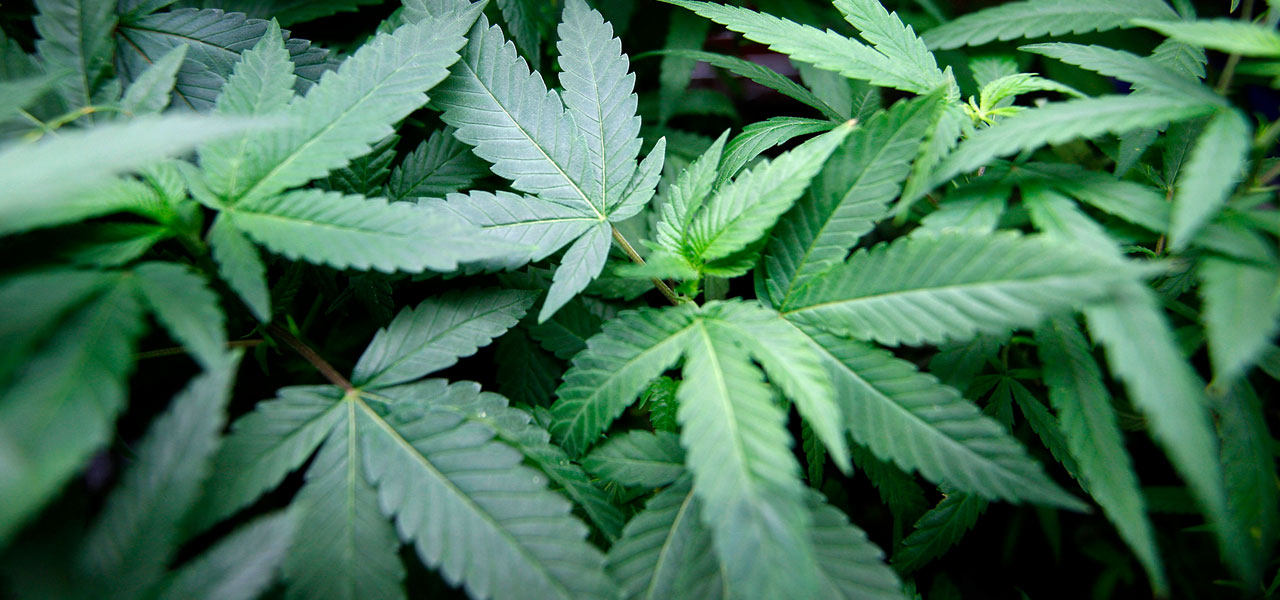
Ayurveda is an ancient healing system from India that translates to be the “Science of Life”. Its origins date back somewhere between 5 and 10 thousand years ago, although it has been described as being as old as Humanity itself. Abnormal tissue development or cancerous tissue in the human body has been a topic discussed throughout the ages in both Ayurveda and today in Modern Science. Even today many questions are being explored as the best approach to healing the many forms in which this disease manifests. As there are many different types of tissues in the body, any of these can develop abnormally. The herb Cannabis Sativa has gained popularity in mainstream media often times debating its application and possible health benefits when dealing with patients who have become ill due to cancerous tissue. The exploration of Abnormal Tissue Development and the use of Cannabis Sativa in Ancient and Modern Times will provide a look into the viable possibilities of dealing with a modern day epidemic.
The Science of Ayurveda provides a holistic approach to well-being and is founded through the Ancient Vedas of India considered the oldest writings in the world. The Ayurvedic Texts provide the largest compiled knowledge on the subject of health and healing and date back to 500 and 1500 BC. Exploring these writings will allow for an in depth look into practical application of Ayurveda and the use of Cannabis Sativa to promote healing and well-being to patients suffering due to abnormalities in tissue development.
The foundation of Ayurveda is built upon the “Three Pillars”. “The Charaka Samhita states that one who manages these Three Pillars properly is guaranteed a full span of life that is not cut short by disease”.11 The three pillars are food, sleep, and observance of brahmacharya. Food refers to proper digestion which sustains the proper development of tissue and energy in the body. If inappropriate food is taken then the result is disturbance in the development of tissue and toxins increase in the body leading to disease. Sleep is utilized to rest and repair the body and if adequate sleep is not received then the body breaks down. Too much or too little sleep determines the quality of tissue development. Too little sleep builds weak tissue whereas too much sleep develops excessive tissue. Management of sexual energy is crucial due to the concept of optimal tissue development, development of intellect, and cultivation of the life sustaining force in Ayurveda called Ojas. When all three of these concepts are followed health and well-being is ensured according to this system.
The Ayurvedic System works in accordance with the three pillars of life through the Doshas, Dhatus, and Srotas. “Dosha literally means faulty or to cause harm”, yet when in balance maintain harmonious health of the normal body processes. 11 The Three Doshas are the forces that determine their embodiment of the five elements earth, water, fire, air, and ether. The three Doshas are Vata, Pitta, and Kapha. Vata being air and ether breaks down tissue and generates movement throughout the body, pitta being fire and water maintains metabolic activity, and kapha being water and earth builds new tissues. The Dhatus are the tissues and there are seven of them Rasa the plasma, Rakta the blood, Mamsa the muscle, Medas the fat, Asthi the bone, Majja the nerves, Shukra the reproductive. The Srotas are the channels that allow the bodily systems to flow providing nourishment to tissue and removing wastes keeping tissues clean. The Srotas allow a person to eat, digest, deficate, breathe, and procreate, the basic functions of being a human and maintaining a body.
Abnormal tissue or overgrown tissue is always a Kapha imbalance. This Kaphagenic lifestyle can lead to overgrown tissue, abscesses, tumors, cancer and overall stagnicity in the body causing blockages and excess fluid. The Sushruta Samhita mentions “A swelling, no matter whether limited or extensive, spontaneously runs on to suppuration, if not medically treated, or left to nature. The base of such a swelling goes on extending. It becomes unequally supporated and reaches an unequal elevation, thus affecting the deeper tissues of the part and swiftly running into one of an incurable type”.12 It was known through the ancient scripts that it is rare for an over development of tissue to reduce naturally and if left untreated would lead to an incurable disease.
In Ayurveda the physician would use their wisdom of the properties of each dosha to work to bring the kapha dosha back into balance. Keeping in mind that any of the doshas out of balance can push Kapha to develop abnormal tissue. Certain Herbs or herb blends would be used to shock the dosha back into balance. In regards to the Ayurvedic Physician, in the chapter of the Susruta Samhita which deals with the mode of distinguishing between supporating and non-supporating swellings known as Ama-pakvaisaniya adhyaya, the Authorative verse is as follows, “They Physician (surgeon) who opens an unsuppurated or unripe swelling out of ignorance, as well as the man who neglects a fully supporated one, should be looked upon as the vilest canda’la for his wrong or incorrect diagnosis”.12 This statement expresses the utmost importance of proper diagnosis when dealing with abnormal tissue growth. The Sushruta Samhita is a reference literature based in Surgery in the ancient time of Ayurveda, whereas describes surgery to a patient with a tumor.
Proper treatment of benign and malignant tumors is explained in the chapter Granthi-Arbuda-Slipada-Apaci-Nadi-Pratisedha of the Ashtanga Hrdaya of Vagbhata, The Book of Eight Branches of Ayurveda. “For benign tumors which is unripe, the treatment is the same as of any swelling. The patient requiring purificatory therapies should be given oleation therapy first with ghee made with brhati, citraka, vyaghri, and kana; when he gets purified, application of paste of drugs of penetrating action should be done (on the tumor); the tumor should be fomented many a times and squeezed (by hands) again and again.”.8 For malignant tumors the same treatment is prescribed. Note, the application of paste of drugs of penetrating action. The Ashtanga Hrdaya states, “inspite of all the treatments, should be cut and when bleeding stops it should be burnt by fire (thermal cautery) leaving no residue/remnant, because such as residue/remnant is sure to develop again into a tumour”.8 Even to this day we use a very similar approach to cutting out a tumor and getting out the residual of cancerous tissue in hopes the tumor will not come back. Modern Technology offers abundant applications to work to make this tumor method removal more successful.
The purpose of this research is to assess if the principles of Ayurveda can actually prevent the need to perform open surgery using the principles to reduce the abnormal tissue growth before it becomes ripe, along with beneficial application of medicine for those which are ripe. This would imply getting to the root cause of the symptom. Through the Ayurvedic approaches of creating balance within the systems of the body, generating abnormal tissue growth can be reverted. The Herb Cannabis Sativa has been used throughout the ages as a medicine to subdue many ailments. In Sanskrit, the language of Ayurveda, Cannabis is known by many names including bhanga and indrasana. The properties of Cannabis Sativa include Rasa a bitter taste, Guna qualities are light, strong or fast and penetrating, and dry, Vipaka has a pungent taste after digestion, Veerya has a hot potency, Its Prabhav is intoxicating, and it balances the Vata and Kapha Dosha. It also increases heat in the body referred to as ushna property.10
There are many preparations of bhanga and when spoken about within ancient texts it is implied that it is never administered without careful preparation most often administer mixed with various other herbs. According to the Dravyaguna Vijnana there are three important preparations. They are jatiphaladi curna, indrasana-rasayana, and madananada modaka. Jatiphaladi curna is mainly used in treatment of digestive and respirat